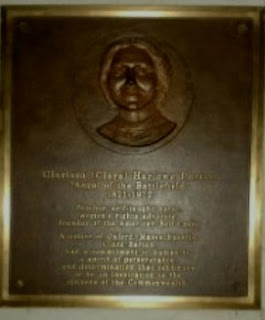Book Review: The Color of Politics
Published
in 1997, The Color of Politics: Race and
the Mainsprings of American Politics written by Michael Goldfield is a
political science/labor-studies book about class, economics, political, and
racial issues within American society.
The book is divided into three parts: Critical Turning Points in Early
U.S. History; Twentieth Century Politics; and Part III – Conclusion.
In
part 1 of the book, Goldfield explores the contradictory nature of early
American leaders. For example, 5 of the
first 7 presidents and the majority of the presidential cabinet members &
Supreme Court justices were slave owners.
Although he hated slavery, President Abraham Lincoln still held racist
beliefs, Goldfield writes.
In
Part 2, Goldfield argues that present-day racial segregation can be attributed
to policies that existed decades ago. On
page 205, Goldfield writes: “The high degree of segregation in many U.S. cities
in the present period can, at least in part, be traced to federal housing
policy under FDR.” Continuing on page
206, he writes that African Americans “were heavily discriminated against in
the granting of Federal Housing Authority (FHA) and Veterans Administration
(VA) loan guarantees and subsidies.”
Racial
discrimination also has impacted hiring selections for jobs. On page 206, Goldfield continues: “Initial policies
in the defense industry in 1940 led many companies to hire only white workers,
few if any even considering Black workers for skilled jobs.”
Goldfield
points out that during the 1980s, the United States went from being the largest
creditor nation in the world to being the largest debtor nation in the world. Goldfield also explains that wage disparities
in the United States, which are greater than in any other economically
developed capitalist country in the world, have continued to rapidly increase.
Throughout
the book, Goldfield raises insightful questions about the role that class,
economics, politics, and race play in American life. One segment in Part III of the book is
particularly noteworthy.
Goldfield
writes on page 342: “Contrary to the claims of critics, quotas and preferences
abound throughout the society. They may
be right, they may be wrong, but they are rarely attacked. The Constitution, for example, says that each
state is entitled to two senators, clearly an undemocratic quota because
citizens in New York State and California have a far smaller fraction of the
influence in choosing their senator than more favored citizens in Wyoming. Who has been making an issue of this
quota? We have seen the even more
extreme legislative preferences that existed in most southern states for the
first two-thirds of this century, quotas that were often accepted by many of
the same people who now oppose all forms of affirmative action… More common
today is the use of informal kinship and friendship networks for jobs. Whatever the mechanism, they all add up to
the exclusion of African-Americans on the basis of race, clear violations of
the merit principle. What solution do
critics of affirmative action propose for these violations of the merit
principle that they supposedly oppose, and where are their indignant
expressions of protest?”


Comments
Post a Comment